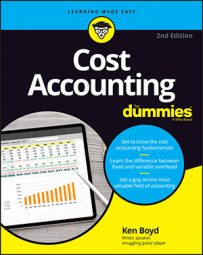When cost accounting, after you count the physical units and figuring a method of costing them, put the two together. You use equivalent units to assign real dollar costs to products.
Say you’re a candy manufacturer. You make inexpensive pieces of candy that sell for 20 cents each. So a piece of candy is your product unit. The table displays the movement of physical units for a period.
| Units | |
|---|---|
| Work in process, beginning inventory (9/1) | 400,000 |
| Units started during September | 800,000 |
| Units to account for | 1,200,000 |
| Completed and transferred out during September | 600,000 |
| Work in process, ending inventory (9/30) | 600,000 |
| Units accounted for | 1,200,000 |
The formula is:
Beginning inventory WIP + units started during the month = units completed and transferred out + ending inventory WIP
The total units to account for agrees with the total units accounted for. (And it’s a good thing all the WIP candy went out the door, because candy doesn’t improve with age.)
If the formula for units to account for doesn’t balance, stop your analysis and find the error. Otherwise, there’s no point in attaching dollar amounts to the units.
Here are the costs of making candy for the period:
Total costs = cost of beginning inventory + costs added during the period Total costs = $48,000 + $53,800 Total costs = $101,800

